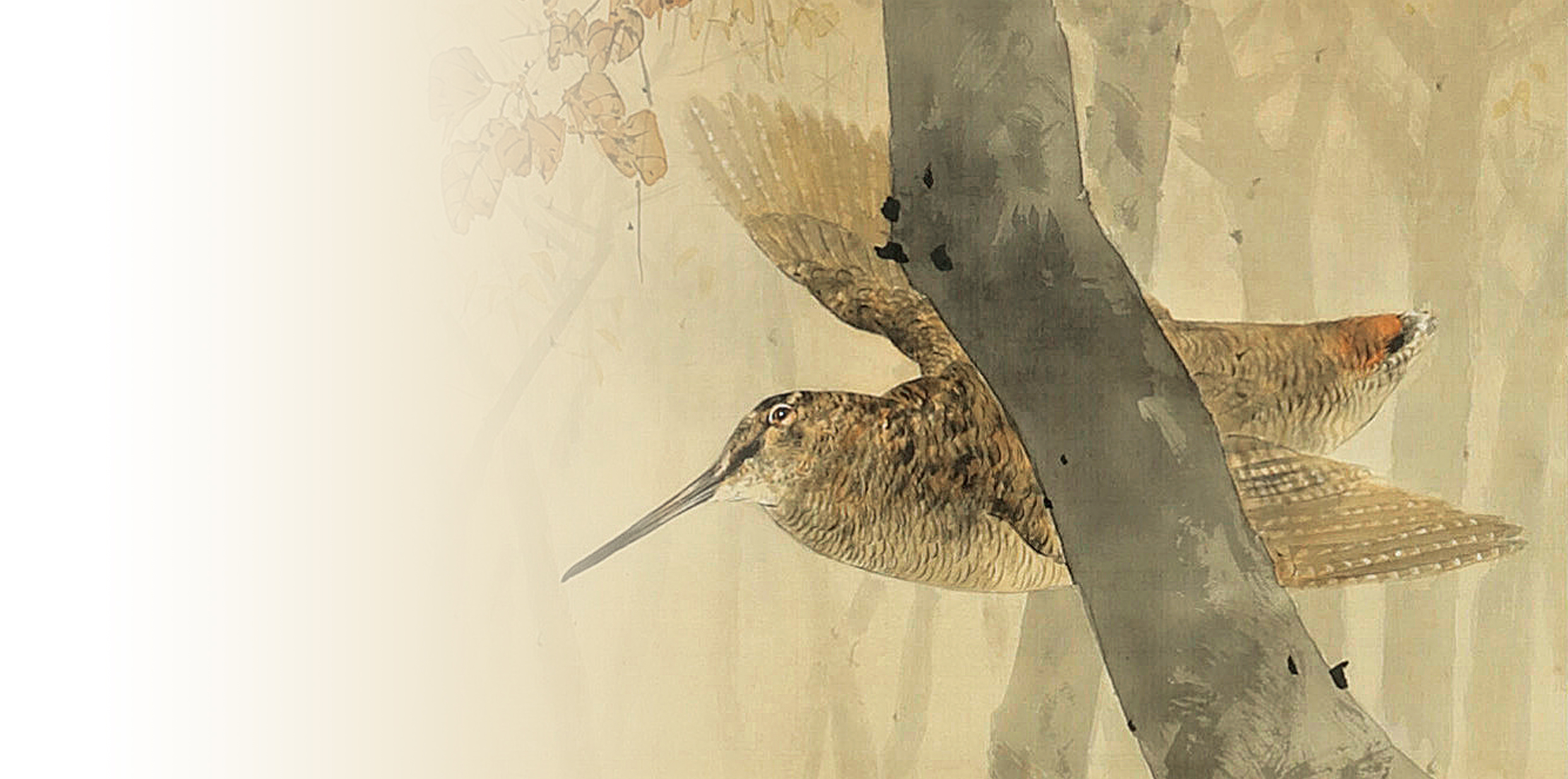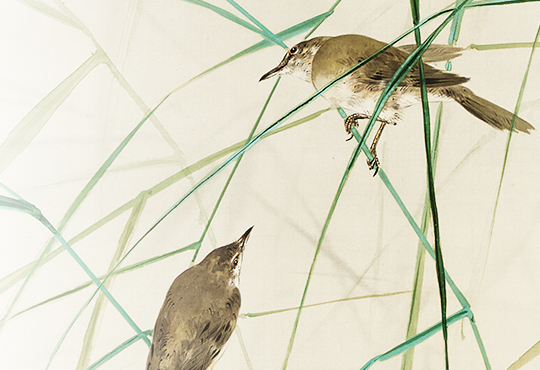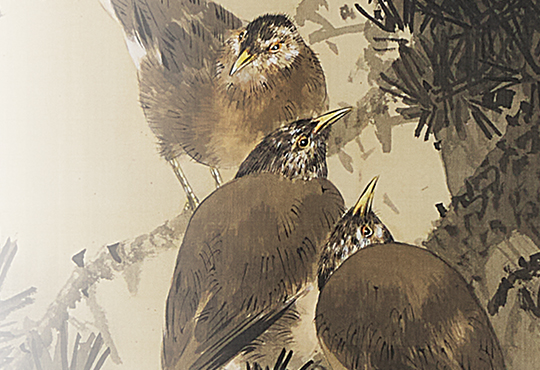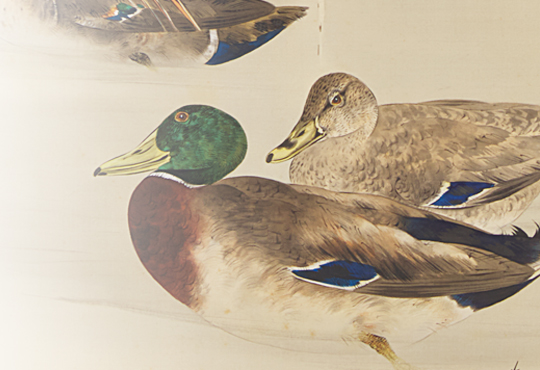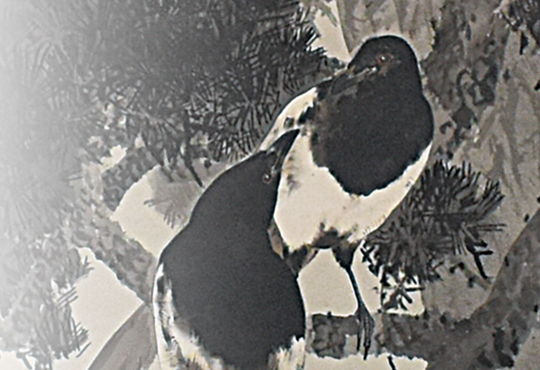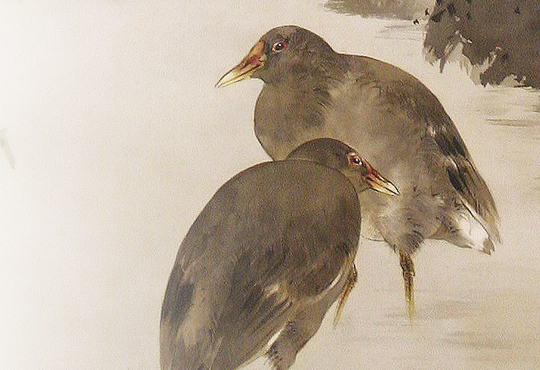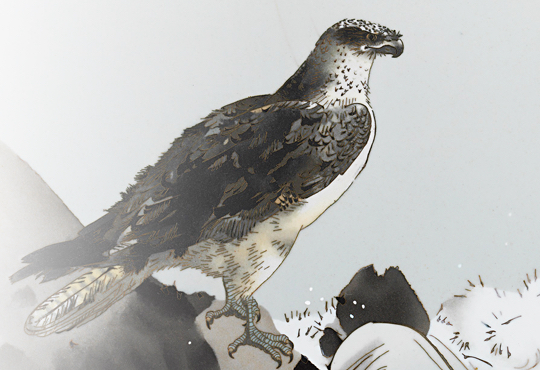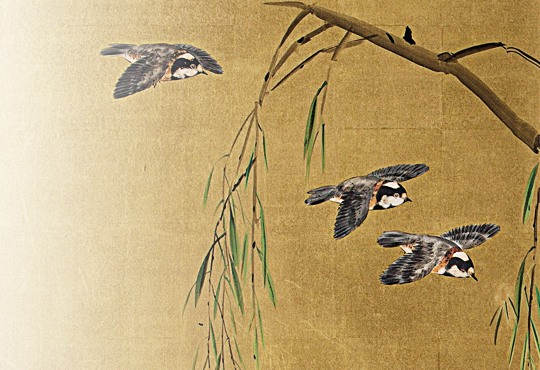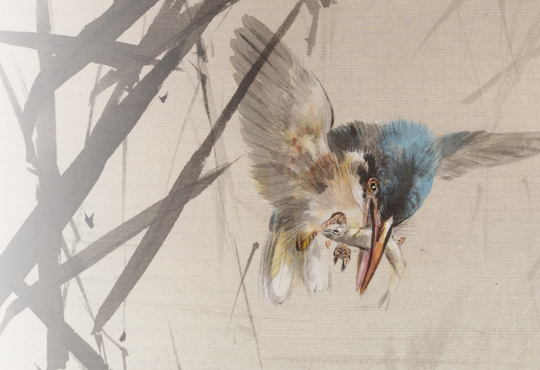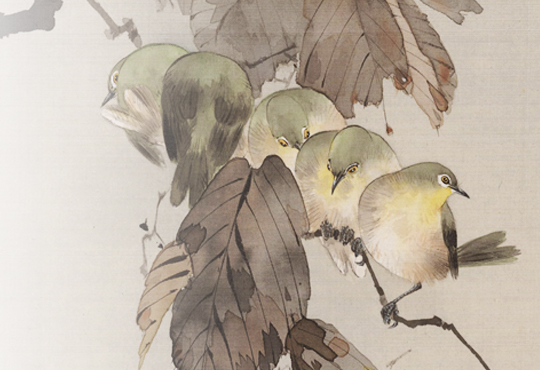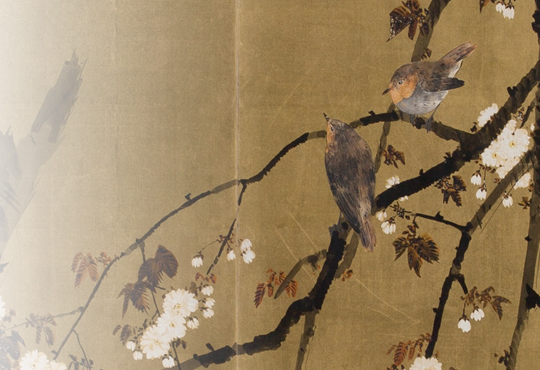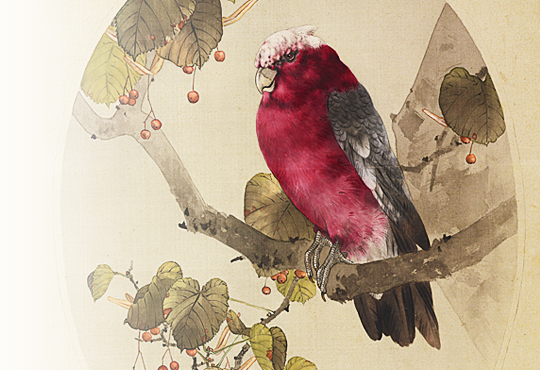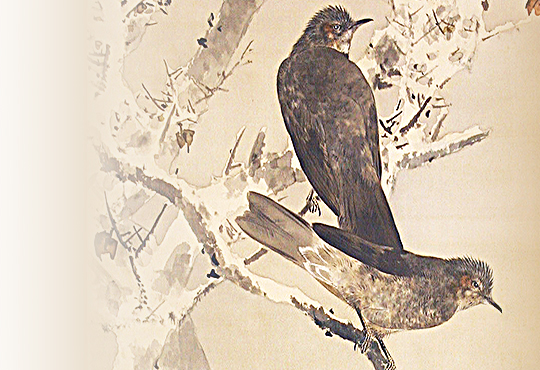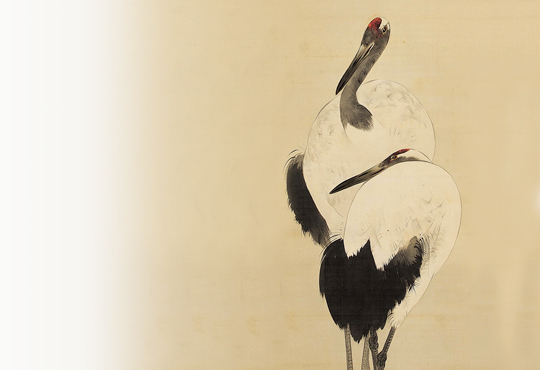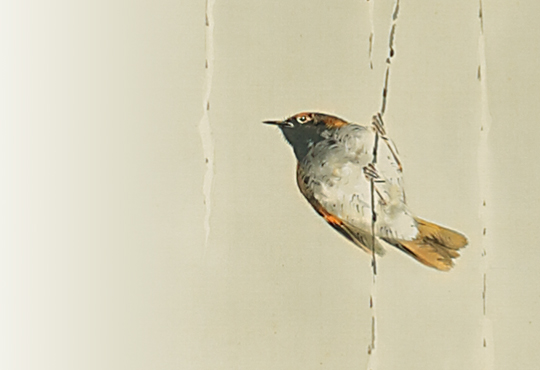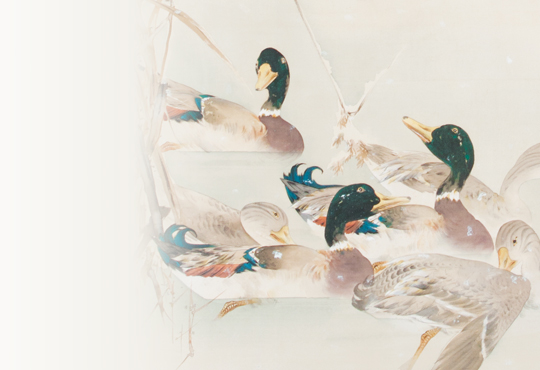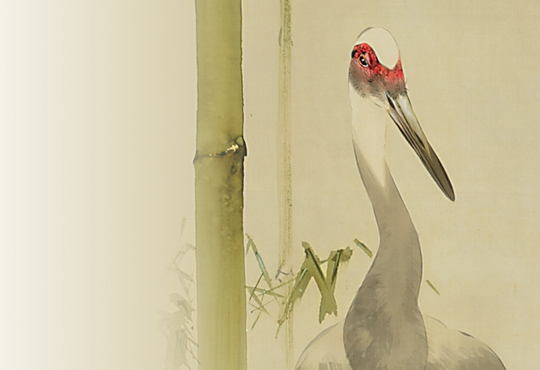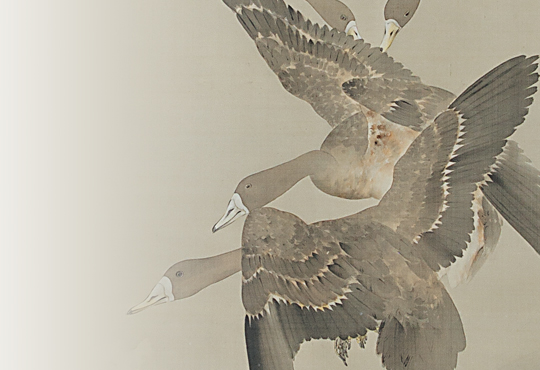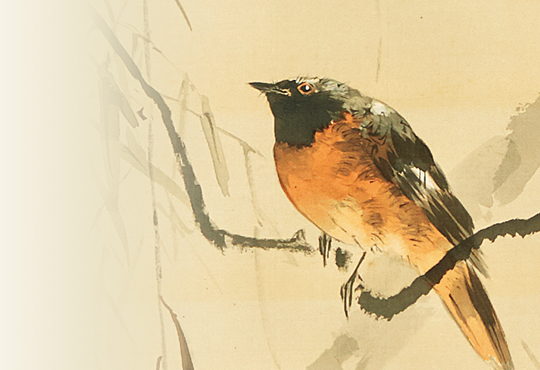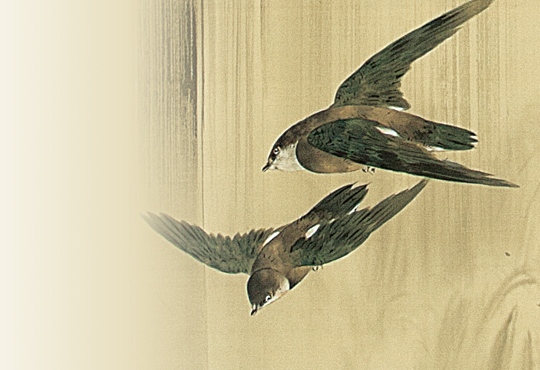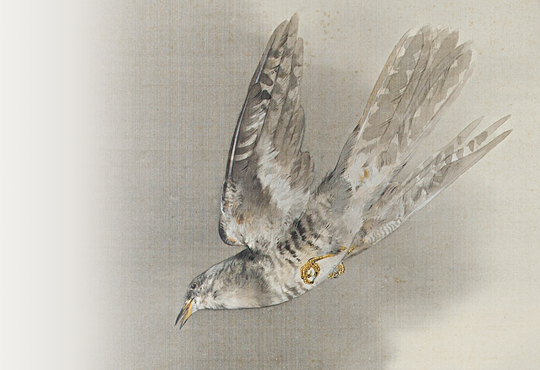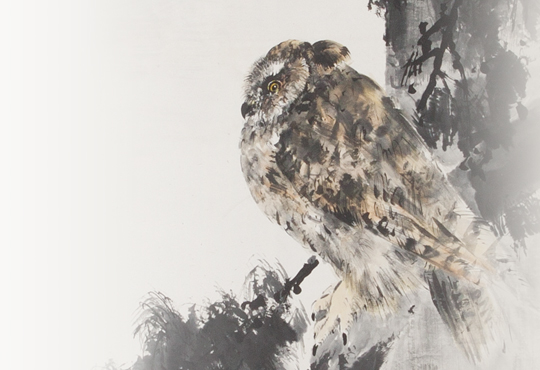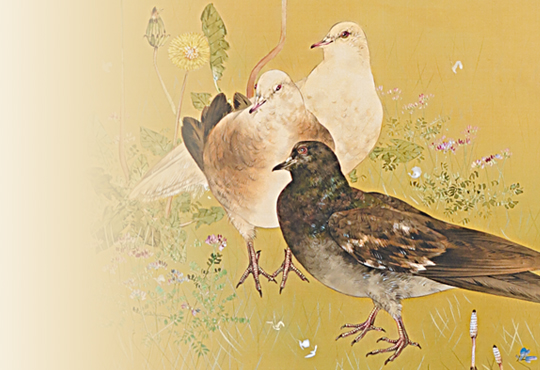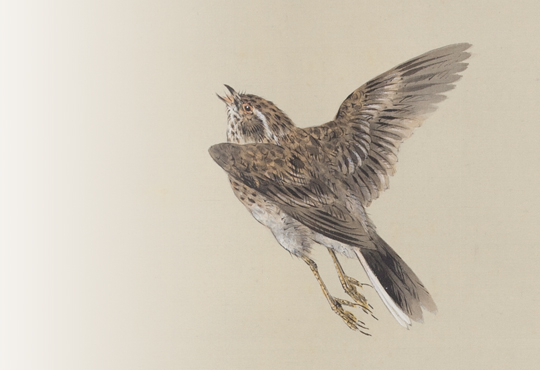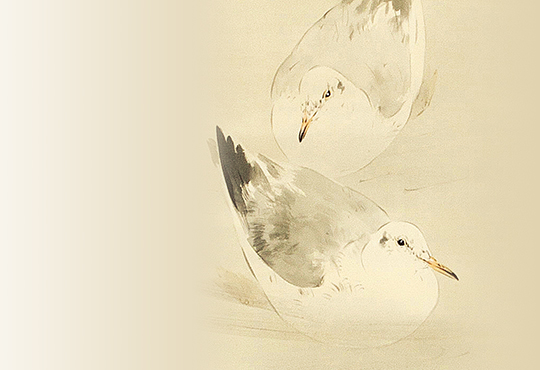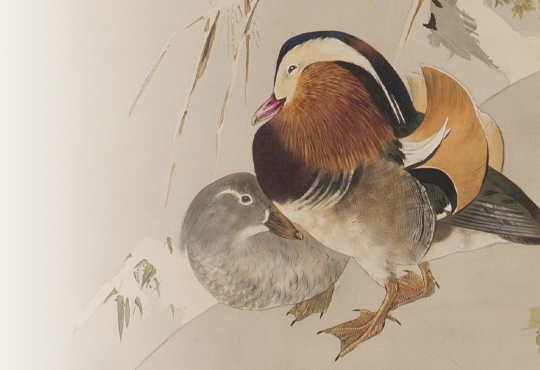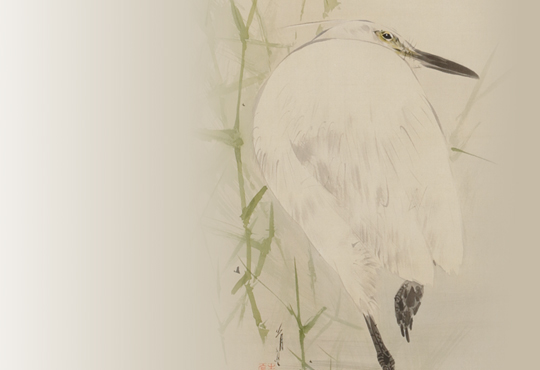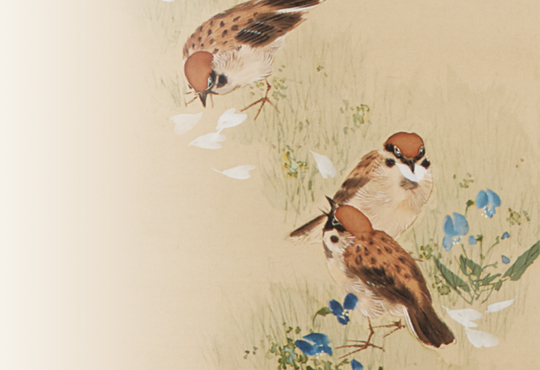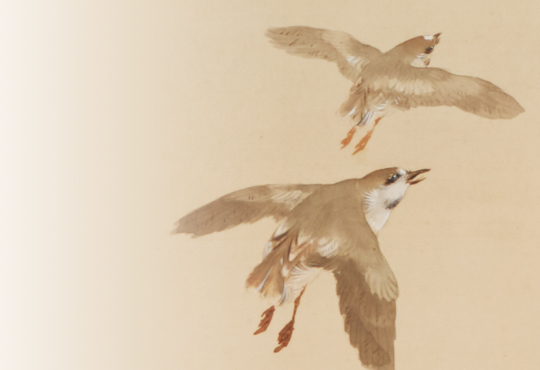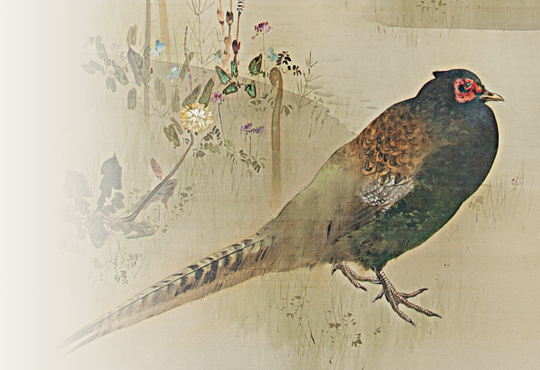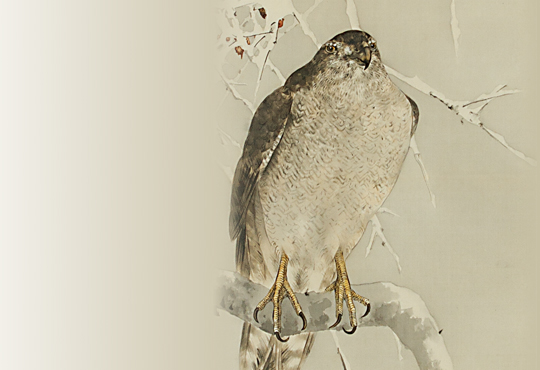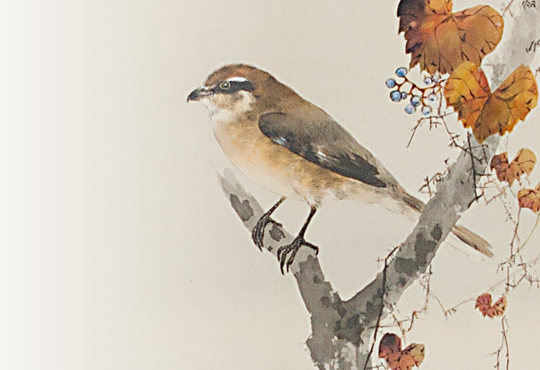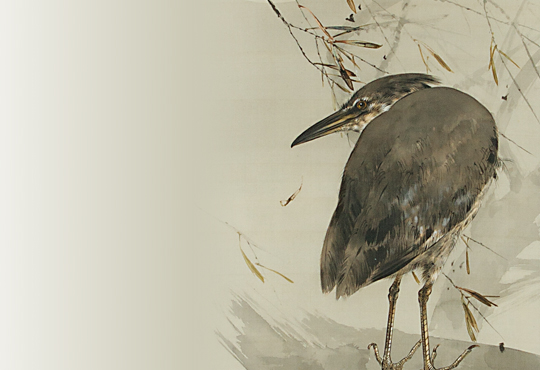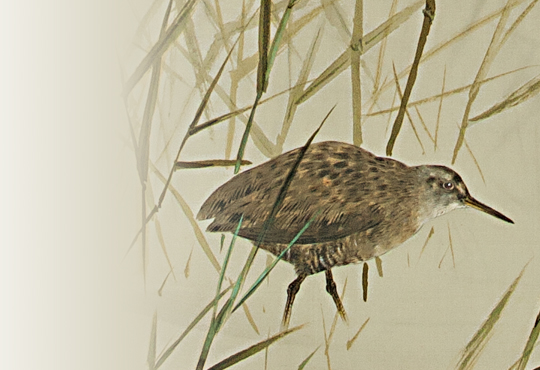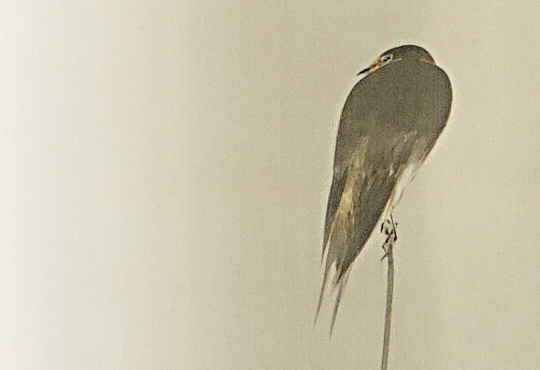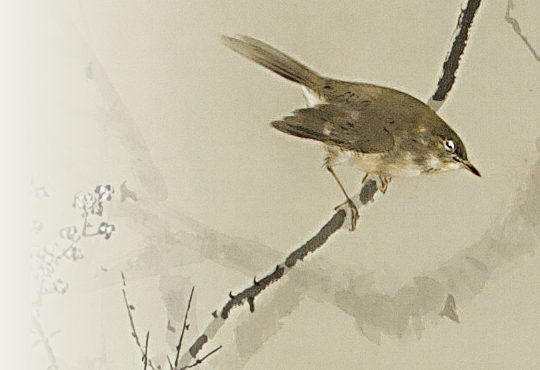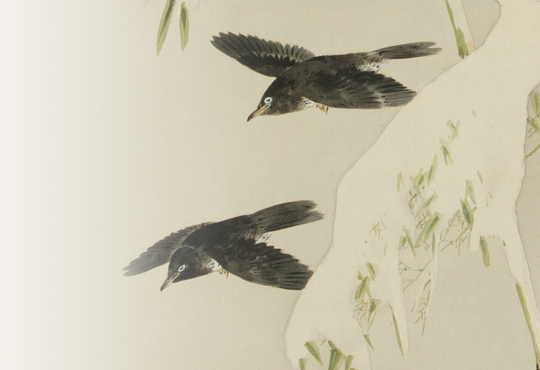vol.09 Seitei’s Rival, Araki Jippo: Woodcock
What a maniac bird he painted! This is my first impression upon this painting. This bird is the Eurasian Woodcock (Scolopax rusticola: 34cm in body length) belonging to the family of sandpiper, and they are widely distributed throughout the Eurasian continent from Europe to East Asia. In Japan, they breed in Hokkaido and eastern Japan and spend their winter in eastern Japan and southward. They live in sparse forests and farmlands, and search and eat small animals such as insects and earthworms in the ground by using their long beaks. They have a relatively large population but even ornithologists have few opportunities to meet them, which makes it hard to say they are familiar birds. This is mainly because they are nocturnal and live in hiding so they are not visible. I have only seen them a few times, but when I met one in the paddy field on one winter night, he flew up in surprise, crashed into a pole and fell to the ground (there seemed to be no particular injury, and he flew away safely afterwards). I could not find the “sharpness” and “dexterity” that wild animals usually possess, but found it rather “dull” . Perhaps some people may think that they are “cute” , but they don’t have much factors to gain general popularity and interest.
You may notice that the Woodcocks have fine designs on each feather if you observe them carefully. However, their delicate beauty is hardly noticed because they are simply brown overall. Perhaps for this reason, or for the lack of familiarity as I mentioned earlier, they have not appeared in Japanese paintings. Seitei painted Woodcocks realistically at least in two works; “Woodcock” (private collection) and this work. Similar to the case of Water Rails introduced in my previous essay, he perhaps likes uncolorful and maniac birds.
Recently I found a Woodcock in Japanese painting other than Seitei. Birds and Flowers of Four Seasons 03: Autumn (Yamatane Museum of Art), one of four scrolls painted by Araki Jippo (1872-1944). He was one of the popular painters from the late Meiji period to the early Showa period, and is said to have belonged to the Conservative Party. His teacher was Araki Kanpo (1831-1915), who competed with Seitei over the wall decorations of the State Guest House, Akasaka Palace. Both Arakis were strong in flower and bird paintings. Jippo was 21 years younger than Seitei but was active during the same period and painted many flowers and birds, and it would be safe to say they were rivals. Let us compare the two Woodcocks and see the differences in their styles.
First, let us look at Seitei’s Woodcock. In autumn, a Woodcock flies in a sparse forest with dead leaves. The depiction is extremely realistic such as the position of its eyes, body balance, the color pattern of its head and torso, etc. Even small features, such as its reddish brown waist, white end of tail, and the color patterns of primary feathers on its wings, are accurately captured. These details can only be noticed by carefully observing the real bird in one’s own hands. In addition, the color gradation from back to belly and the soft hazy color of its wing tips make this Woodcock three-dimensional. We can feel Seitei’s high observation skill and strong determination as well as his exceptional ability to paint details with meticulous precision. However, his Woodcock may be too overweight. It is true you can feel its plump body if you hold a Woodcock in your hands. Seitei would have felt the same if he held one in his hands, and he probably wished to express the texture more accurately in his painting. That might make his bird look plumpier than real.
Next, let’s look at Jippo’s Woodcock. Broad-leaved trees with their autumn foliage stand closely together on a large screen, and the top half is decorated with vivid orange-red colors while the bottom half is uncolorful and sober. However, the two Woodcocks and Gentian flowers in the bottom half catch our eyes. Their body forms and position of eyes, as well as the black spots around their eyes and back of head are all accurately drawn (although there are imperfections in some details such as the color of their eyes and toenails). In particular, the fine patterns on the feathers of its back and wings are drawn separately for each part and play a decorative role in the sober lower half of the screen. Their faces are drawn with a little humor, and look like a cartoon with deformation rather than a realistic depiction. The body is slenderer than the real, giving an impression that it is very light. The whole is unified by two-dimensionality in accordance with traditional Japanese paintings, and three-dimensional effects are not seen in this Woodcocks.
To express these differences in a simple way, Seitei’s Woodcock is three-dimensional and voluminous while Jippo’s Woodcock is flat and lightweight. It is difficult to judge the superiority of artistry. However, it’s true that they had very different artistic values and strived towards different styles of flower and bird paintings.
Author : Masao Takahashi Ph.D. (Ornithologist)
Dr. Masao Takahashi was born 1982 in Hachinohe (Aomori prefecture) and graduated from Rikkyo University’s Graduate School of Science. Dr. Takahashi specializes in behavioral ecology and the conservation of birds that inhabit farmlands and wet grasslands. Focusing on the relation between birds and art, he has participated in various museum and gallery talks.
